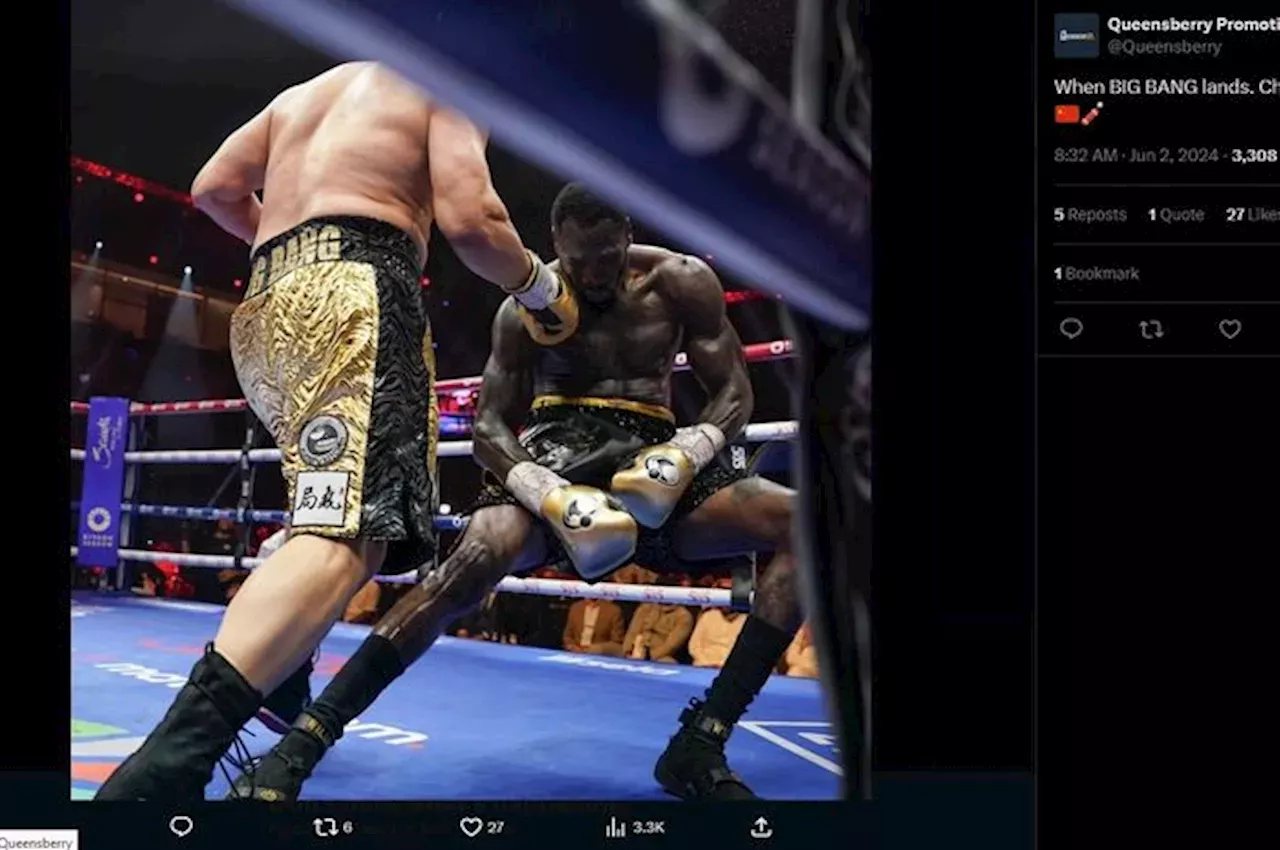Deontay Wilder’s Ring Walk Timeline: Deontay Wilder Ring Walk Time

Deontay wilder ring walk time – Deontay Wilder’s ring walk is a carefully choreographed spectacle that sets the tone for his fights. It is a combination of music, lights, and theatrics that culminates in his entrance into the ring, where he faces his opponent.
Wilder’s ring walk typically begins with a darkened arena. As the lights dim, the sound of a gong fills the air, signaling the start of his walk. Wilder emerges from the darkness, clad in a black robe and mask, his face obscured from view.
Duration and Special Effects
Wilder’s ring walk is one of the longest in boxing, lasting around 10 minutes. During this time, he walks slowly towards the ring, accompanied by a pulsating soundtrack and a pyrotechnic display. The arena is filled with smoke and lasers, creating a dramatic and intimidating atmosphere.
Crowd Reactions
Wilder’s ring walk is met with a mixture of cheers and boos from the crowd. His fans are energized by the spectacle, while his opponents are often intimidated by the display of confidence and power.
Significance of the Ring Walk, Deontay wilder ring walk time
Wilder’s ring walk is more than just a show; it is an integral part of his pre-fight ritual. It allows him to focus his mind and get into the zone before the fight. It also serves as a way to intimidate his opponents and make a statement about his dominance in the ring.
Analysis of Wilder’s Ring Walk Strategies

Deontay Wilder’s ring walk has become an integral part of his persona and fight strategy. It is a carefully crafted performance designed to intimidate opponents, build crowd anticipation, and establish a dominant presence in the ring. By analyzing the psychological and strategic elements of his walk, we can gain insights into its effectiveness and impact on his overall fight performance.
Wilder’s ring walk is characterized by several key elements. He typically enters the arena with a menacing expression, his eyes fixed on his opponent. His walk is deliberate and measured, each step echoing with confidence and power. The music accompanying his walk is often heavy and aggressive, further amplifying the intimidating atmosphere. These elements combine to create a sense of anticipation and unease in the arena, setting the stage for an explosive encounter.
Psychological Impact
The psychological impact of Wilder’s ring walk is undeniable. By projecting an aura of confidence and aggression, he attempts to undermine his opponent’s morale and establish a mental edge. The intense focus and determination in his eyes can unsettle even the most seasoned fighters. Moreover, the crowd’s reaction to his walk, often a mixture of awe and trepidation, further amplifies the psychological pressure on his opponents.
Strategic Advantages
Beyond its psychological impact, Wilder’s ring walk also provides several strategic advantages. The deliberate pace of his walk allows him to control the tempo of the fight from the outset. By taking his time to enter the ring, he can disrupt his opponent’s rhythm and force them to adjust to his terms. Additionally, the aggressive music and menacing expression serve as a distraction, preventing his opponent from fully concentrating on the task at hand.
Effectiveness
The effectiveness of Wilder’s ring walk strategies is evident in his impressive fight record. Throughout his career, he has rarely lost a round in the early stages of a fight, a testament to the psychological and strategic impact of his walk. However, it is important to note that his ring walk is not a foolproof strategy. Opponents who are able to withstand the initial intimidation and maintain their composure can often find success against Wilder later in the fight.
Cultural and Historical Context of Ring Walks

In the realm of combat sports, ring walks stand as an integral component, imbuing the atmosphere with a sense of anticipation and spectacle. These processions have evolved over time, mirroring the transformative nature of boxing itself.
From the early days of bare-knuckle brawls to the modern era of televised extravaganzas, ring walks have served as a platform for boxers to showcase their unique personalities and fighting styles. They are a carefully choreographed dance, each step a calculated move to capture the attention of the crowd and set the tone for the battle ahead.
Evolution of Ring Walks
The origins of ring walks can be traced back to the 19th century, when prizefights were held in makeshift arenas or on bare ground. Fighters would often enter the ring accompanied by their seconds, who carried their equipment and provided moral support. As boxing gained popularity, these entrances became more elaborate, with fighters donning colorful robes and employing musicians to accompany them.
In the 20th century, the rise of televised boxing transformed ring walks into a global phenomenon. Boxers began to use their entrances to create a distinct brand and connect with fans worldwide. Muhammad Ali, with his signature “Ali Shuffle,” and Mike Tyson, with his intimidating entourage, are just two examples of fighters who mastered the art of the ring walk.
Deontay Wilder’s Ring Walk Style
Deontay Wilder’s ring walk is a spectacle in its own right. Donning a black mask and elaborate costume, he emerges from the darkness, his footsteps echoing through the arena. The crowd erupts in a mix of awe and anticipation as he makes his way to the ring, his eyes fixed on his opponent.
Wilder’s ring walk is a reflection of his aggressive and confrontational fighting style. The mask, a symbol of his alter ego “The Bronze Bomber,” represents his determination to intimidate his opponents and assert his dominance in the ring.